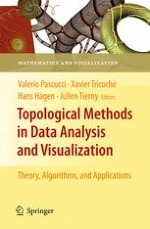Topology-based methods are of increasing importance in the analysis and visualization of datasets from a wide variety of scientific domains such as biology, physics, engineering, and medicine. Current challenges of topology-based techniques include the management of time-dependent data, the representation of large and complex datasets, the characterization of noise and uncertainty, the effective integration of numerical methods with robust combinatorial algorithms, etc. . The editors have brought together the most prominent and best recognized researchers in the field of topology-based data analysis and visualization for a joint discussion and scientific exchange of the latest results in the field. This book contains the best 20 peer-reviewed papers resulting from the discussions and presentations at the third workshop on "Topological Methods in Data Analysis and Visualization", held 2009 in Snowbird, Utah, US. The 2009 "TopoInVis" workshop follows the two successful workshops in 2005 (Slovakia) and 2007 (Germany).
